Fuligo septica - Dog Vomit Slime Mold
In early September of last year (2021), Laurie noticed some strange growths on a the surface of a layer of old hay. The growths were raised white nodules of about an inch in diameter, nestled in a dense layer of…
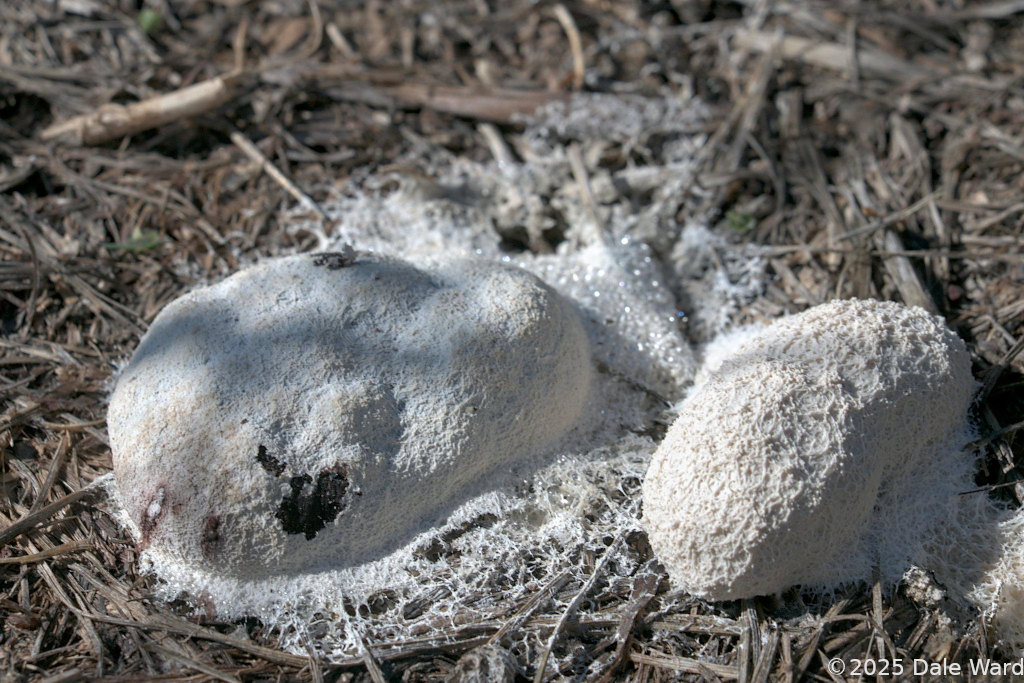 The mounds were an inch or two in diameter, and were surrounded by what looked like spider webs. These are aethelia of a _Fuliga septica_ - the “Dog Vomit Slime Mold”.
The mounds were an inch or two in diameter, and were surrounded by what looked like spider webs. These are aethelia of a _Fuliga septica_ - the “Dog Vomit Slime Mold”.
In early September of last year (2021), Laurie noticed some strange growths on a the surface of a layer of old hay. The growths were raised white nodules of about an inch in diameter, nestled in a dense layer of thick cobwebs. The cobwebs had droplets of glistening fluid on them.
These funny nodules were the fruiting bodies of Slime Molds - probably Fuligo septica, which has the charming common name of “Dog Vomit Slime Mold”. It can range from a creamy white color, as in these instances, to a bright almost-fluorescent yellow color.
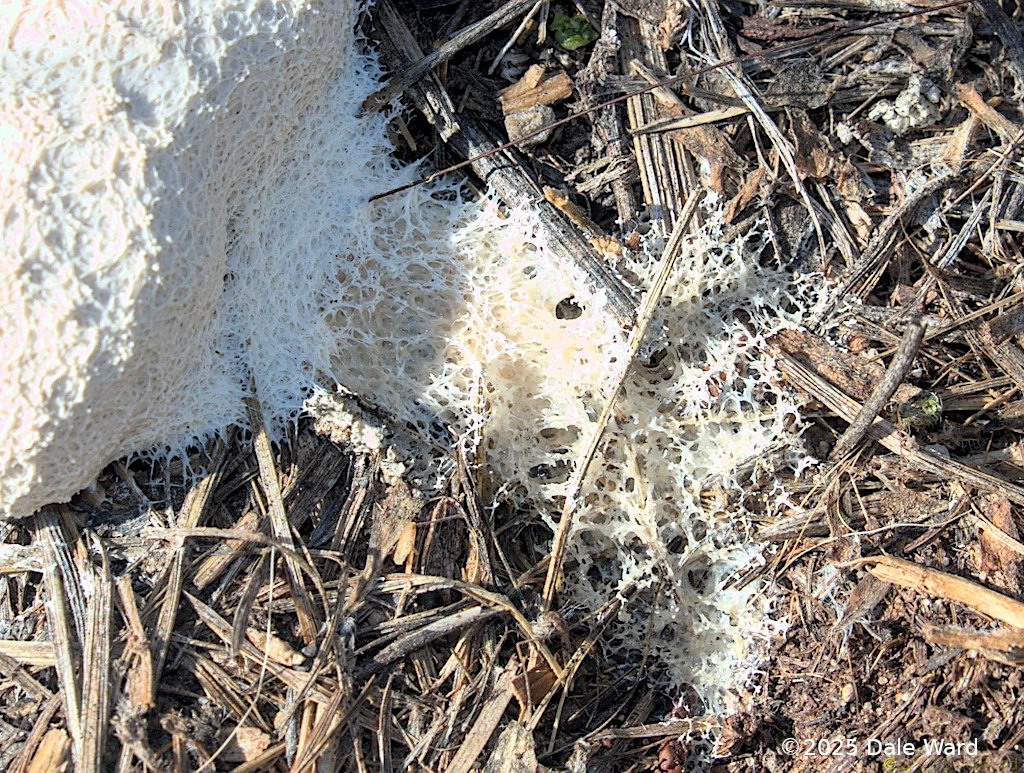 Pseudopodia around the aethelium of the Slime Mold
Pseudopodia around the aethelium of the Slime Mold
An interesting thing about Slime Molds is that each of the white masses in the photographs was a single plasmodium - a mass of undifferentiated protoplasm containing many (millions!) of nuclei.
So, in a way, each one is an enormous cell. The ‘cobwebs’ that we could see around the mounds were actually pseudopodia, similar to those of Amoeba. Like an Amoeba, a Slime Mold moves through the world by extending pseudopodia and then streaming its protoplasm into them.
The Slime Mold also catches and ingests bacteria and other microbes by surrounding and engulfing them with its pseudopodia - again, like a giant Amoeba.
I still can’t quite wrap my mind around this idea…these huge, essentially single-celled, creatures moving through the world like “The Blob” in that old science fiction movie.
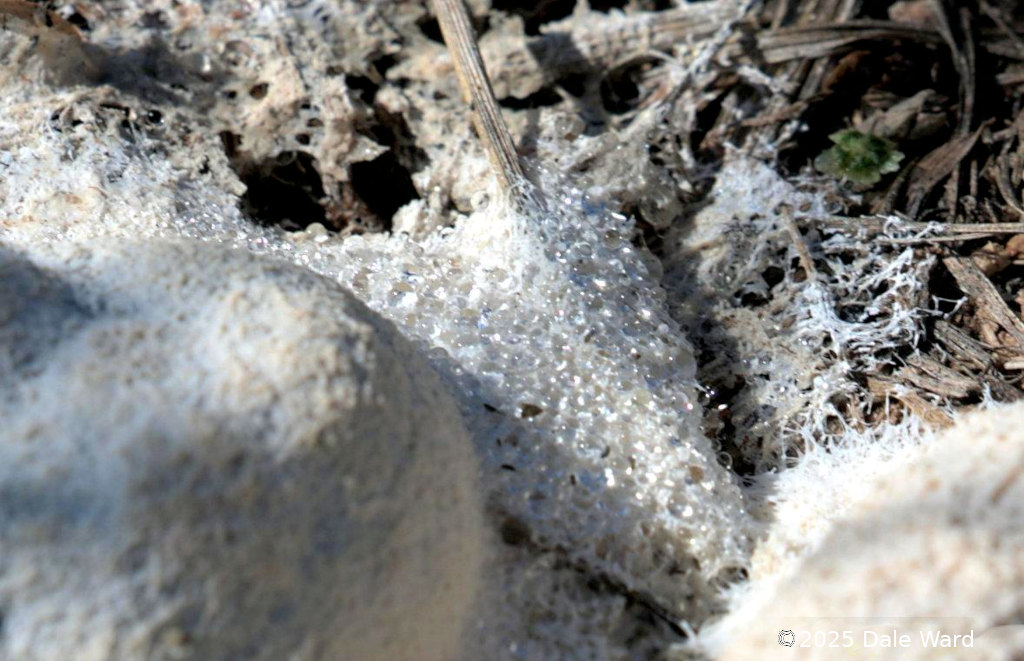 Some places on the Slime Mold were covered with glistening droplets of liquid, as can be seen in the center of this photograph. The process of secreting this droplets is called “guttatation”.
Some places on the Slime Mold were covered with glistening droplets of liquid, as can be seen in the center of this photograph. The process of secreting this droplets is called “guttatation”.
We found these Slime Molds at the tail end of our Summer Monsoon rainy season, when everything was starting to dry out. When the environment dries out, Slime Molds switch from their carefree, nomadic lifestyle into their reproductive mode. That’s what the lumps that Laurie and I had first noticed - the developing spore masses. The Slime Molds were growing spore-filled masses called “aethelia”. In the photo below, the aethelium is probably young - it has a wet, creamy yellowish mass.
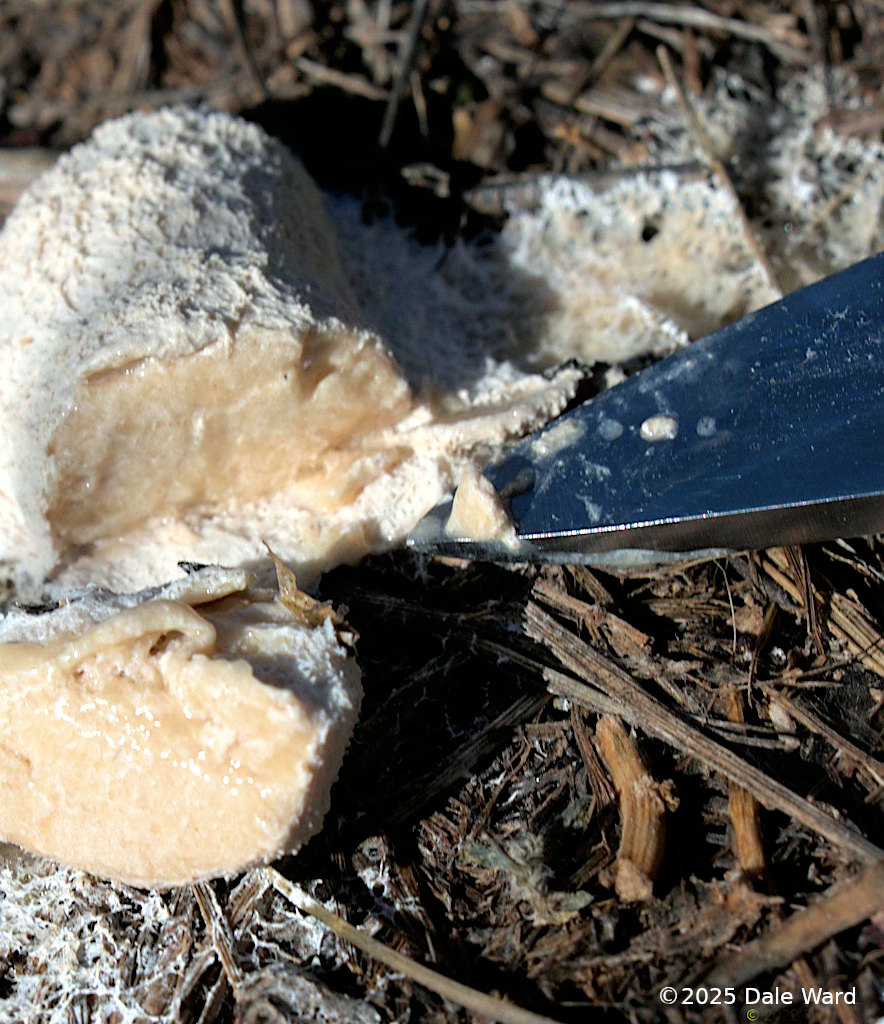 I cut into one of the aethelia with my pocketknife. The inside was a creamy yellow, custard-like substance.
I cut into one of the aethelia with my pocketknife. The inside was a creamy yellow, custard-like substance.
The aethelium in the photo below is more mature - its contents are darker, more granular, like a rich chocolate cake.
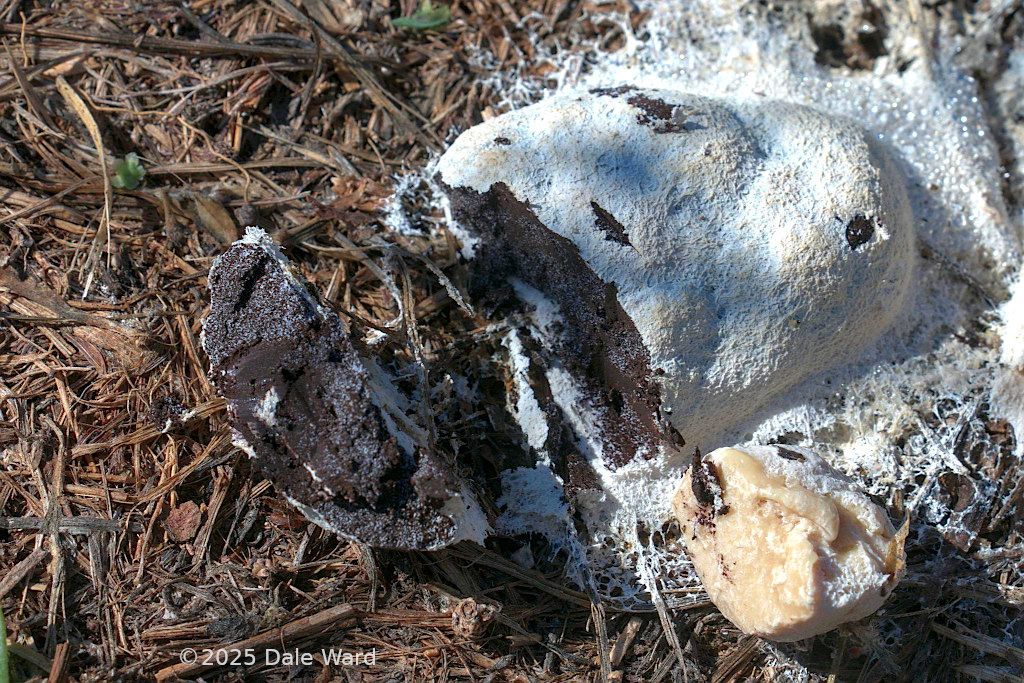 The interior of one of the larger aethelia was a rich chocolate brown, and seemed to have grains embedded within it. The darker, more granular appearance of this aethelium made me think it was older and more mature than the creamy-yellow aethelium.
The interior of one of the larger aethelia was a rich chocolate brown, and seemed to have grains embedded within it. The darker, more granular appearance of this aethelium made me think it was older and more mature than the creamy-yellow aethelium.
Over the next day or so, these aethelia dried out and flattened until they were just stains of brown, spore-dust on the dried grasses. I’ve read that this spore dust can be dispersed by the wind or by Latridiid Fungus Beetles.
The spores can remain viable for at least several years. Then, when conditions are suitable, the spores germinate into small single celled organisms. These new organisms can look like Amoebae, or can develop flagella if there is a lot of moisture.
These little organisms will fuse with others that they encounter - thus creating a new plasmodial organism, growing and streaming its way through the world.
Sources:
Wikipedia’s Fuligo septica entry
Susan Mahr’s 2015 article on Dog Vomit Slime Mold, from the University of Wisconsin’s Master Gardener Website. This is an especially well-done article.